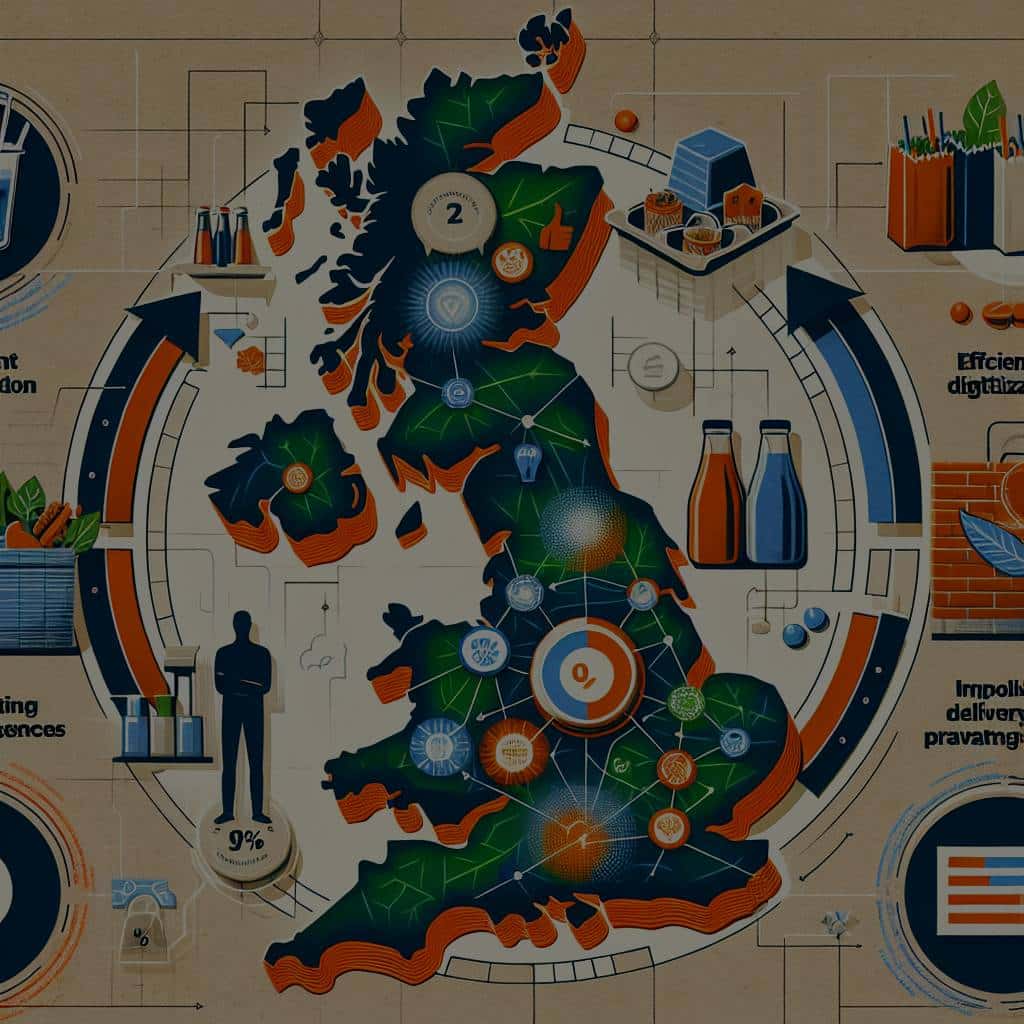What Are the Strategies for UK Restaurants to Overcome the Challenges of Food Delivery Apps?

The restaurant industry is constantly evolving, and in recent years, food delivery apps have become a critical part of this change. These apps, backed by powerhouse companies, offer countless benefits to customers, such as the convenience of ordering food from their favourite restaurants online and having it delivered right at their doorstep. However, for some restaurants, these digital platforms pose significant business challenges. In the UK, restaurants are seeking to maximize the benefits of these delivery apps, while also mitigating their drawbacks. This comprehensive guide aims to explore these challenges and provide actionable strategies for restaurants to thrive in the face of the shifting market dynamics.
Embracing the Power of Digital Marketing
The first step in overcoming the challenges posed by food delivery apps is to leverage the power of digital marketing. The internet age has drastically changed the way businesses operate, especially in the food and restaurant industry. Online delivery platforms have created a new marketing landscape that restaurants must navigate.
Additional reading : What are the Key Factors in Selecting Sustainable Packaging Materials for UK Cosmetics Brands?
Understanding how customers behave in the online space is crucial for restaurants to effectively market their brand and menu. Using Google analytics and other online tools, restaurants can track customer behaviour, preferences, and habits, and tailor their marketing strategies accordingly. Offering discounts or exclusive online deals, for instance, can encourage customers to order from the restaurant directly.
Additionally, restaurants can invest in creating a strong online presence through a well-designed website, engaging content, and active social media profiles. With high-quality photos of food items and positive customer testimonials, restaurants can create an appealing online image that attracts more customers.
Also read : How Can UK Real Estate Agencies Leverage Virtual Tours to Increase Sales?
Enhancing the Dining Experience
While food delivery apps offer convenience, they cannot replicate the experience of dining in a restaurant. This is an area where restaurants can truly stand out. By focusing on improving the dining experience, restaurants can attract customers who value more than just the convenience of delivery.
Offering a unique and memorable dining experience goes beyond serving delicious food. It involves creating a pleasant ambiance, providing exceptional customer service, and perhaps even offering live entertainment. Special events such as tasting menus, chef’s tables, or themed nights can attract customers looking for a unique dining experience.
Customer service is particularly important in this context. Friendly, attentive staff can make customers feel valued and appreciated, which can lead to repeat business and positive word-of-mouth advertising.
Expanding Direct Delivery Services
One of the main challenges for restaurants with food delivery apps is the associated cost. These apps typically charge high commission rates, which can eat into a restaurant’s profits. An effective strategy to overcome this challenge is for restaurants to expand their own delivery services.
While setting up a direct delivery service requires some initial investment, it can save restaurants substantial amounts in the long run. Direct delivery allows restaurants to have more control over the delivery process, ensuring that food arrives in the best possible condition. It also enables restaurants to build direct relationships with their customers, which can be beneficial for customer loyalty and repeat business.
Utilizing Data to Improve Service
In the digital age, data is a valuable asset that can help restaurants improve their service and stay competitive. Food delivery apps gather a wealth of data about customer preferences, order histories, and delivery performance, which can provide valuable insights for restaurants.
By analyzing this data, restaurants can identify popular menu items, peak ordering times, and areas with high delivery demand. This information can be used to optimize menu offerings, staff scheduling, and delivery routes. It can also help restaurants identify areas for improvement and make informed decisions about their business.
Collaborating with Delivery Apps
While food delivery apps pose challenges, they also offer opportunities for restaurants. These platforms have a wide reach and can introduce a restaurant to a larger customer base. Instead of viewing these apps as competitors, restaurants can collaborate with them to maximize their benefits.
Restaurants can negotiate with delivery platforms for better terms or engage in promotional deals. Restaurants can also take advantage of the marketing opportunities provided by these platforms to increase their visibility. By working together with delivery apps, restaurants can turn a potential business threat into a strategic advantage.
In conclusion, while the rise of food delivery apps has indeed posed challenges to the UK’s restaurant industry, these challenges are not insurmountable. By embracing digital marketing, enhancing the dining experience, expanding direct delivery services, utilizing data, and collaborating with delivery apps, restaurants can not only survive in this new landscape but thrive in it.
Incorporating Technology and App Development
In the current digital era, investing in technology and app development can be a game-changer for restaurants. It’s more than just having a presence on third-party delivery apps like Uber Eats. To beat the competition, restaurants must consider developing their own apps.
Creating a proprietary app gives restaurants the power to control their online ordering process and customer experience. The app can be tailored to meet the specific needs of the restaurant, including an easy-to-navigate menu, a simple checkout process, and a reliable tracking system. This way, restaurants do not have to rely solely on third-party apps, which often charge high commission fees.
By integrating Google Scholar or other analytical tools, restaurants can gather valuable data on customer behavior and preferences. This information is pivotal for refining the app’s features and improving the overall customer experience.
Moreover, having a dedicated app can help cultivate customer loyalty. Features like loyalty programs, special discounts for app users, or a points system can encourage customers to use the restaurant’s app for their food delivery needs.
While app development requires an upfront investment, the benefits gained in the long term can outweigh the initial costs. With an efficient delivery system coupled with enhanced customer experience, restaurants can gain a competitive edge in the online food delivery industry.
Adapting to the New Normal: COVID Pandemic and Food Safety
The COVID-19 pandemic has significantly impacted the restaurant industry, particularly the food delivery sector. Customers’ concerns about food safety have increased, making it a priority for restaurants. Therefore, it is essential for UK restaurants to ensure and communicate their commitment to food safety to retain their customer base.
Restaurants need to implement and adhere to strict food safety protocols, from food preparation to packaging and delivery. This includes regular sanitization of kitchen spaces, wearing masks and gloves during food handling and preparation, and ensuring contactless deliveries wherever possible.
Similarly, the safety of the delivery driver cannot be overlooked. Restaurants must ensure that their delivery personnel are equipped with necessary protective gear and are trained in safety procedures. Furthermore, restaurants should consider offering health benefits or insurance to their delivery staff as part of their commitment to safety.
Regularly updating customers about these safety measures through social media can help in building trust and confidence. Restaurants can even consider adding a feature in their app or website detailing their safety procedures and providing real-time updates.
In conclusion, the challenges presented by food delivery apps require UK restaurants to adapt and innovate. By investing in app development and prioritizing food safety, restaurants can not only meet the demands of the evolving delivery industry but also provide a superior customer experience. Despite the challenges, the rise of food delivery apps also presents many opportunities for restaurants to expand their reach and grow their customer base. It’s all about finding the right strategies and leveraging the benefits to turn potential threats into opportunities. Ultimately, the goal is not just to survive in this competitive landscape but to flourish and thrive.
